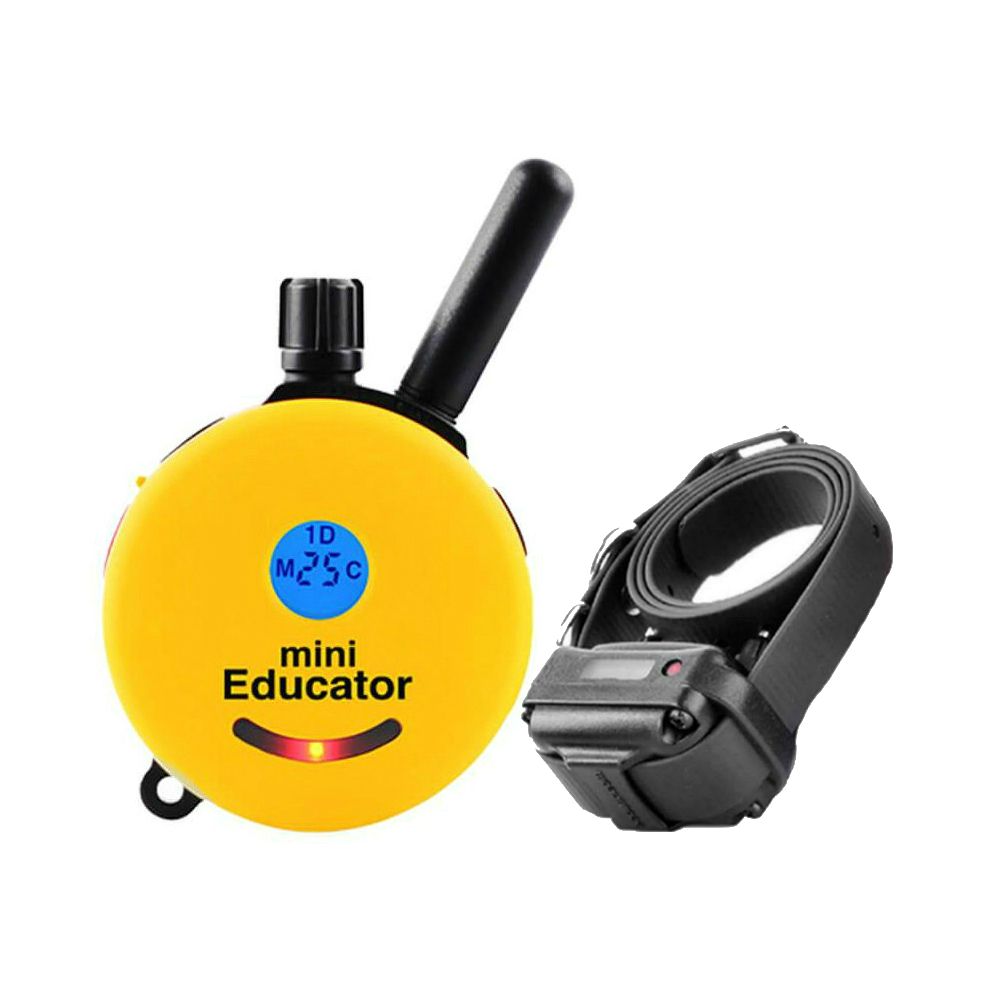
There are many types of dog training collars on the market all of which are useful in different situations. In this article I am going to focus on how to use an electronic collar or e-collar to train your dog.
Sometimes called shock collars, e-collars emit an electronic pulse to your dog’s neck through two small prongs on the collar. This electric stimulation is triggered by a remote control unit that can be set to a wide range of levels depending on your dog’s temperament and sensitivity level.
Safety is paramount when using an electric dog collar. Experts agree e-collars are safe when used properly. When used carelessly they can be ineffective and even confuse or frighten your dog.
If you have already purchased a collar, read the accompanying manual and operating instructions completely before putting the collar on your dog.
This article is only a summary, however, K9 Electronics offers a free, step-by-step, e-collar training guide with every purchase that will show you exactly how to introduce the collar to your dog and its correct use in much greater detail.
Although each model available at K9 Electronics has its specific features, all shock collars operate via a radio signal and contain two operant components: a handheld remote which transmits the signal, and a receiver-collar that’s fitted around the dog’s neck. All of the electric dog training collars sold at K9 Electronics offer Vibration or Tone only buttons (or both) as warning features and variable static stimulation (up to 127 levels) with two modes of delivery: Continuous or Momentary.
The best training collars are going to have at least 100 levels of correction. This allows you to really fine-tune the static stimulation to your dog’s specific temperament.
Like other types of dog training collars such as pinch collars or choke chains, electric collars deliver an unpleasant sensation, from a distance, to interrupt your dog without the use of brute force. Timing is crucial when delivering a correction, the more precise the timing is, the quicker your dog will make the association and change his or her behavior. One of hallmark benefits of electric collars is the ability to communicate at a distance, which is why e-collars are so popular for hunting and other advanced dog sports.
Training with a remote collar can be divided into two general categories: stopping unwanted behaviors and reinforcing learned commands. Electric shock collars are never used to introduce new commands or to punish your dog, nor should they be used on pups under six months.
Stopping unwanted behaviors is the number one reason people purchase electric dog collars. Whether it is jumping up, eating garbage, chasing cats, or some other irritating or dangerous behavior, a shock collar will cease the behavior in a short time.
How to Introduce a Shock Collar to a Dog
The first thing you will do is familiarize yourself with and test the functions of your new dog training collar. Next you will fit the collar correctly on your dog. A proper fit is extremely important. The collar should fit high on the neck near the ears and be snug to ensure the probes make contact with the skin and not sliding around the dog’s neck. You should be able to just slip two fingers under the collar.
Collar-Wise
It is important that your dog associates the correction with the command or unwanted behavior and not the with the e-collar. If your dog becomes aware that the correction is coming from the collar he will become what is called “collar-wise.” Meaning that when he wears the collar he will not misbehave but when it is off he will do as he pleases. We are all eager to begin training, but to prevent this from happening you’ll want to let him wear the electric collar around for several days (no more than 8 hours per day) before turning it on so that he becomes accustomed to the weight and believes it is just another collar like he wears with his tags and nothing more.
Setting the Stimulation Level
K9 Electronics promotes the “Tapping” method at very low levels of static stimulation. To set the initial training level, you must first determine the lowest stimulation that will clearly get your dog’s attention. To do this you begin with the stimulation set at zero on the remote, fit the collar properly on your dog’s neck and let your dog explore the training area. Once he is engaged and not focused on you, begin tapping on the stimulation button while very slowly increasing the level. At some point your dog will respond with a head tilt or his ears will prick up, or he will give a signal that he felt something. This is the level at which you will begin training.
If your dog yelps or jumps, the level is too high. Don’t erroneously think that because your dog is big or small it should have a certain level; every dog is an individual and unique. Some are more sensitive than others, some learn more slowly or quickly.
Stopping Unwanted Behaviors
For this type of training, you will want to set the shock collar to Momentary and at the predetermined stimulation level discussed above. You will let your dog roam the area in which he engages in unwanted behavior, say eating garbage for example. If possible be out of sight or at a discreet distance from your pet. The instant your dog engages in the target behavior begin tapping the button. This will send an annoying pulse to your dog’s neck that he will associate with the target behavior. If your dog does not respond continue tapping and increase the level until he stops. Timing is crucial and being able to catch your dog in the act and deliver a correction at the precise moment will drastically shorten training time. Soon your dog will learn that eating garbage is not as fun as it used to be.
Reinforcing Learned Behaviors
Electric dog collars are never used to teach commands, such as the basic obedience commands: sit, stay, down, and come. However, if your dog knows the commands but responds inconsistently, or is slower or less precise than you would like, an e-collar can sharpen your dog’s skills.
When reinforcing a learned command, you will use the exact opposite technique as for stopping an unwanted behavior: with one you add stimulation, with the other you subtract stimulation. Whereas to stop a behavior you introduce or add stimulation to startle your pet into ceasing the activity, to reinforce a behavior, you will remove stimulation when your dog responds correctly to the command. You will give your dog a command, and he will receive stimulation until he obeys the command. The sooner he obeys, the sooner the unpleasant sensation stops. When your dog figures out that he can control the annoying pulse by complying with the command, a light bulb will go off. Once he learns this the first time, all the rest of the commands will be easier.
For example, say you have taught your dog to come when called, but over time he has gotten inconsistent or slow to respond. You can communicate to him via the remote trainer that he must respond immediately to your call.
Set the electric collar to Momentary mode and at the initial stimulation level. Test it. Now fit the collar on your dog along with his regular collar and a long lead. Let him roam around the training area a bit. Then give him the “come” command (or “here” or whatever word he knows) and simultaneously tap on the continuous button and tug on the lead. The instant your dog moves toward you, stop tapping and stop tugging. Praise your dog when you stop tapping. If he stops before he reaches you or turns away, begin tapping again, repeat the command and tug on the lead. Stop tapping the instant he starts towards you again. When he reaches you, completing the command, reward him with play or a treat and release him.
Repeat this three or four times with play breaks in between and plenty of praise when he performs correctly. If he doesn’t get it the first session, don’t give up and do not increase the stimulation. Try to work on this in short sessions a couple of times per day. During the training period never give the command if you are not able to enforce it.
Your dog has to make the mental connection between stopping the sensation and his behavior; it can take a week or more for some dogs. Eventually he will make that connection, and when he does, you will have reached a new level of communication with him.
Together, these two methods, adding stimulation when your dog engages in unwanted behavior, and removing stimulation to reinforce learned behaviors, can be applied to nearly every training scenario. K9Electronics also offers collars with a vibration only feature, which is useful for training very sensitive dogs and even deaf dogs. Used properly and with care, electric collars can be a safe and effective tool to train, build communication, and strengthen your bond with your best friend.



Subscribeto get the latest dog training articles, latest offers & news.
You have Successfully Subscribed!